Text
Consumerism & Witchcraft
Written by Marimo (he/they)🌿
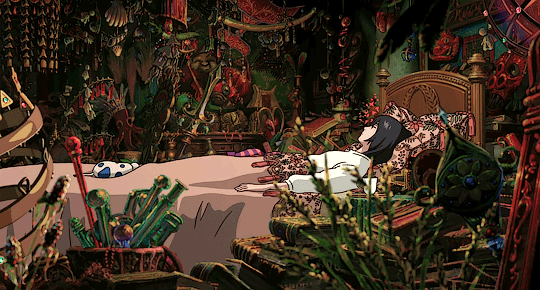
I’ve seen a turn for the better in some witchy spaces regarding consumerism in the past few years, but overall it still tends to be an issue for us as a community. I’ve decided to try and breakdown the pitfalls I’ve noticed in my own journey, in the hopes that it will inspire and assist others. I’ve also provided alternatives and ideas on how to make small changes in our practice to help us better protect the Earth, stick it to the failing system and still acquire our bits and bobs we love so dearly.
As always, I am no authority on any subject nor am I perfect—but we’re all learning as we go, so let’s dive right in 🌿
A Preface
There are some things that should be made entirely clear before we begin:
You are not a bad person for wanting an aesthetic
You are not a bad person for unknowingly falling into pitfalls. Only if you continue to purposefully do so after knowing better
You are not a bad person for consuming content/objects or for not always making the most sustainable decisions. At the end of the day, we can only control our small part of environmental impact, while the rest is left up to the major corporations that make more pollution than any of us ever will
You are only human. Show yourself some grace and understanding that the internet so lacks.
My Experience in Consumerist Hell
I have fallen victim many times to consumerism in witchcraft. Starting my journey at the ripe age of about ten years old and heavily in the broom closet, I was quickly drawn in by the shiny rocks, the brand new candles and scents, the promise of new tarot decks and pendulums and other fancy, shiny new equipment. I was consuming an online aesthetic along with my ideals, and it distracted me from starting my journey by learning well.
I began to spend my birthday and holiday money on the aesthetic of things. While, granted, I still did buy a few literary resources now and again from my local secondhand bookstore—I was stubbornly ignoring the sage advice to learn and understand first before diving in headfirst.
I purchased statues, crystals, too many tarot decks to use. I purchased osteomancy bones I later returned to the earth, for I had not done enough research to know that that animal was mine to practice with. I had a tankard full of incense sticks, and even a growing pile of books that would not be read. While I liked to consider myself crafty with my homemade Maypole and various hand-bound Grimoires, something was becoming apparent: this was all a distraction.
The aesthetic I was partaking in was providing me with a false sense of progress and practicality.
When I’d go to do a tarot reading, I’d become far too overwhelmed with choosing a deck to read in the first place. When making an offering to a deity, I’d feel pressured to also bolster the altars of all the other deities I’d set up, and with my wide pool, the connections felt muddy. Often times I’d be off-put on a project or spell because I knew I needed to film it and it needed to look nice.
In the long term, I don’t have many of these items today. I’ve sold and donated a vast breadth of them. Feeling overwhelmed costed me a few years retreat from my craft to recuperate. However, what has stuck with me is the knowledge I picked up along the way.
So, What’s the Issue? TL;DR
I’ve noticed a few issues here in making these mistakes myself.
Consumerism absolutely distracts you from learning and your craft
Overconsumption leads to environmental damage. If everyone hoarded supplies, there would not be enough to go around. And with what gets thrown away every year…it paints an ugly wound on the Earth
We damage our learning abilities by not allowing ourselves to be anything less than perfect
The need for aesthetic creates barriers to entry within the community and creates a divide of haves and have-nots
You won’t be able to truly follow your individual path if you are only consuming and not creating for yourself
Consumerist culture promotes appropriation. Metaphysical stores carry items from closed practices (such as white sage and palo santo, or coyote bones) because someone is buying them. Don’t be that person, and find alternatives relating to your own culture instead
Consumerism can influence your spiritual decisions based upon monetary inclinations (where some may sacrifice a quality ingredient over a higher quantity of a lower quality ingredient)
So, what can we do?
Firstly, I want to clarify that I am not against collecting, nor am I against maximalism or the beautiful visual aesthetic we carry as a community.
I am an artist a very visual person and understand the longing for a beautiful home and workspace. However, this aesthetic shouldn’t come at the cost of irresponsibly harming the Earth or another community.
Thus, I’ve compiled a list of small things that I will be incorporating into my practice to make it more mindful and sustainable. I hope that you’ll join me in a few of them.
Minimize Supplies. While I used to have a huge selection of stationary for my Grimoire, I now limit myself to a simple pencil and watercolor set if I’m feeling artistic. This helps me actually use my Grimoire for study, rather than to keep perfect. It’s also friendlier on my wallet!
Thrift Supplies. There are plenty of perfectly good items that get donated daily. You can get high-quality candles and holders, old crystal bowls for altar offerings, spare crafting supplies, fabric for alter cloths and even clothing if you so wish—all for a fraction of the cost new and while saving the planet just a little bit more. Hell, you can sometimes even find good silver!
Share Supplies with your Community. You can create a sort of barter system with other witches in your area. Perhaps you create a sigil for them, and they provide you with a candle spell. Play to your strengths and grow together!
Look for Creative Outlets. Do you really need to go buy an altar statue that’s been mass-produced? Or can you give your deity the personal gift of a drawing, painting or even hand-modeled or hand-carved rendition? This will also deepen your connection to your craft and your magic, and make it more meaningful and stronger. If you really like something, though, go for it!
If you aren’t the artistic sort, consider supporting an artist before going to a large company. While I haven’t purchased from them myself, Blagowood on Etsy has beautiful deity statues carved from wood by their small team in Ukraine for a comparable cost to the standard mass produced metal statues. I consider this extra labor of love going into these pieces and those of similar small companies to be much better energy for my practice. I myself may put out some art prints and other handmade supplies in the future, but I will likely spread them around my community first.
Try Secondhand Books. While not available in every area and further still not as available for witchcraft and occult books, you may strike luck! Not only are secondhand books less expensive, but you’ll be supporting a local business. That’s not to say you can’t buy firsthand books, but some searching around may be beneficial to the earth and to your wallet in the long run.
Be mindful of where you source supplies and decor. If you are a fan of taxidermy decor, make sure that you source cruelty free. Bats can practically never be sourced without cruelty, so if a shop carries them, I’d be mindful of their other specimens. The same goes for if a shop decides to forgo a culture’s wishes and carry supplies sacred to them, such as white sage or dreamcatchers. Supporting folks who turn a profit off of others’ suffering is not something many would wish to include energetically in their craft.
Search the Wild for Tools. Find sticks, flowers and other plants out in the forest. Learn how to rockhound in your area for crystals. Your craft will be more powerful the more connected it is to the land you are surrounded by. Be sure to reference guides for safety and legality!
Get Creative with Purposes. If you are having difficulty finding exactly what you need by thrifting or searching, make another tool multipurpose if it would do the job good enough. Find supplies that are easy to source and work as substitutes for other ingredients (ex. Quartz as a stand in for other stones)
Spend more time Doing. Go out into the woods (safely) and advance your connection to the earth instead of worrying over the perfect item for your collection. Your craft will benefit
At the end of the day, all of this is your decision. Take what you like, and leave what you don’t. Even if we don’t agree, I thank you for your time and open mind. I will continue updating about how I incorporate these steps, and I will also hopefully post more on witchy crafting in the future.
I wish you well, and hope you’ll decide to follow along on our journey!
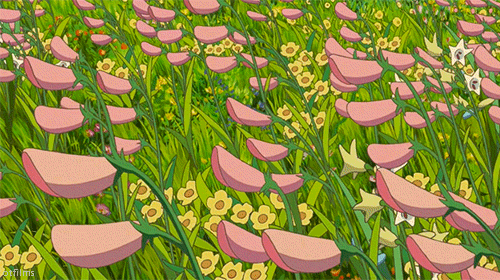
167 notes
·
View notes
Text
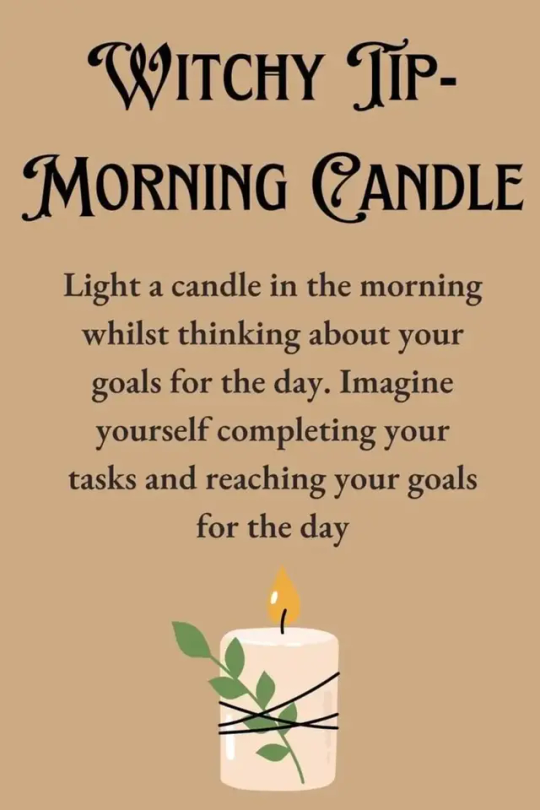
31 notes
·
View notes
Text
🐇 white rabbits 🐇 white rabbits 🐇 white rabbits
0 notes
Text
The Wheel of the Year: Ostara

Photo by Anna Bratiychuk on Unsplash
☽🔮☾🕯🃏🌕🕸✨🍃🍄🧿🌙✩ 🪄📚
Seguir leyendo
4 notes
·
View notes
Text
White rabbits 🐇 white rabbits 🐇 White rabbits
1 note
·
View note
Text
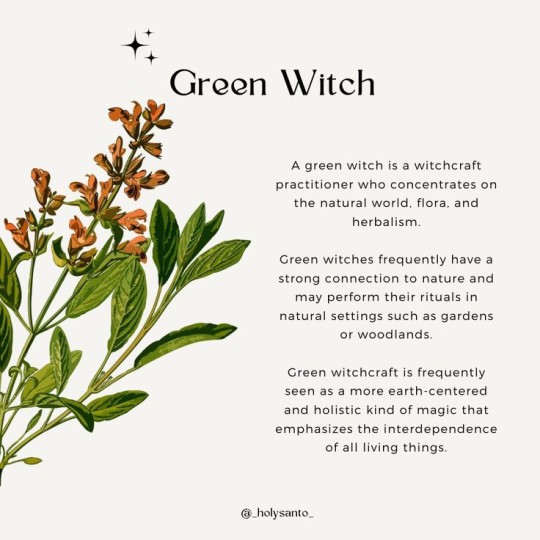

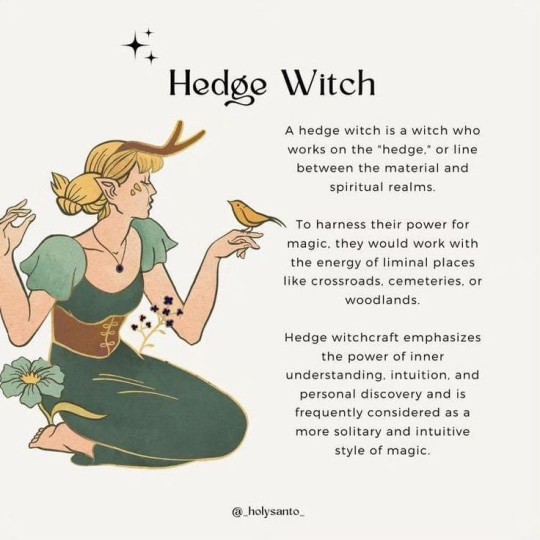


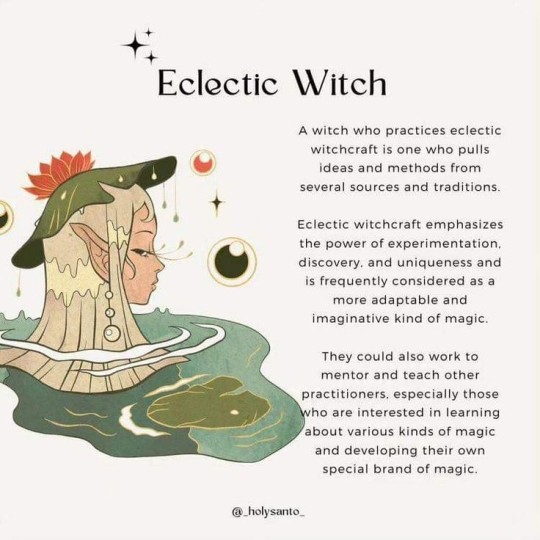

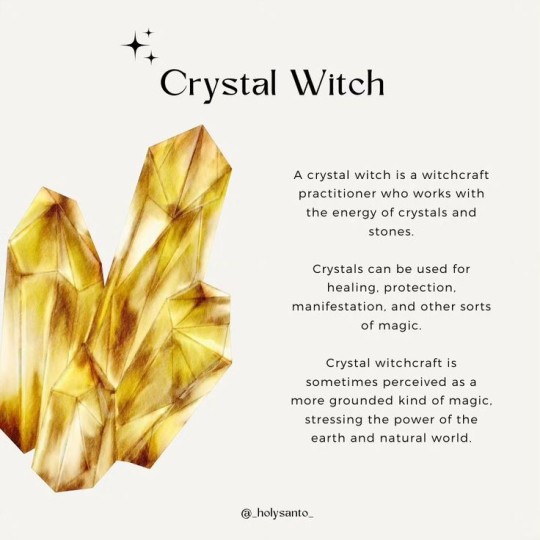
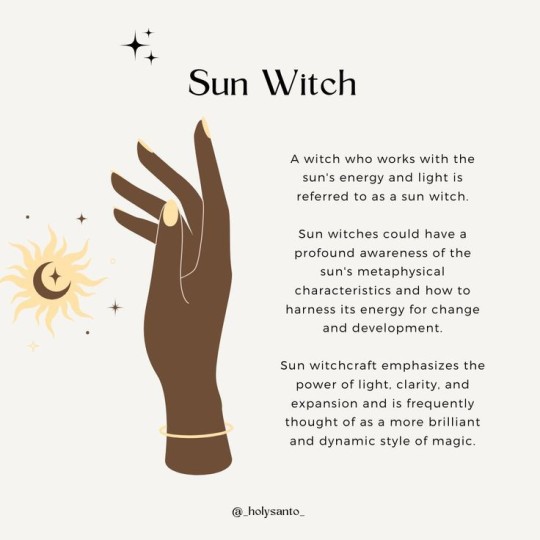
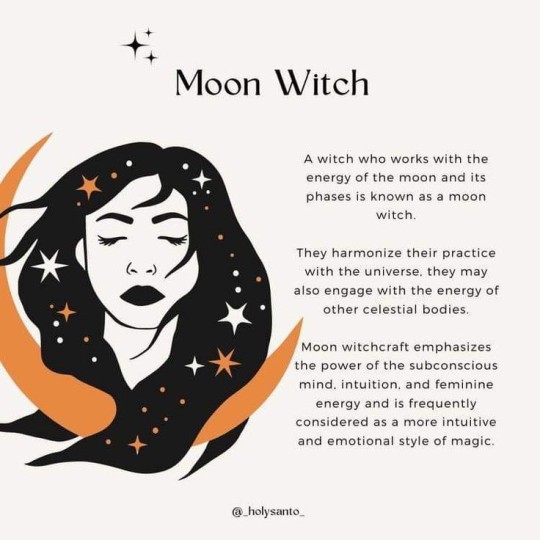
4K notes
·
View notes
Text
The 15 Most Powerful Healing Herbs in Your Kitchen
August 3, 2011
The humble herb and spice rack in your kitchen today need not be just a decorative feature, although they look quite pleasing to the eye hanging on the wall, in both modern and old fashioned styled homes. They can in fact hold a plethora of natural healing ingredients that can also add great taste to the foods you eat every day.
Of all the herbs and spices you can choose from for flavor, there are 15 that are more powerful than the rest. Below is the list and you may well be surprised to learn of the many diverse conditions for which they’ve proven so very useful.
1. BASIL - Basil is an herbal carminative, that is, it can relieve gas and soothe stomach upsets. One possible explanation for its calming effect is a compound called eugenol, which has been shown to help ease muscle spasms. Research is still preliminary, but laboratory studies also suggest that compounds found in basil may help disrupt the dangerous chain of events that can lead to the development of cancer.
2. CAYENNE - Cayenne pepper is a hot red powder made from tropical chili peppers. It contains alkaloid capsaicin, which relieves pain by blocking the chemicals that send pain messages to the brain. If you eat cayenne at the first sign of any type of headache, with plenty of water as a chaser, this spicy herb may be an effective alternative treatment. Added to food, cayenne perks up appetite, improves digestion and relieves gas, nausea, and indigestion. The herb also thins phlegm and eases its passage from the lungs, thus helping to prevent and treat coughs, colds and bronchitis.
3. CINNAMON - Cinnamon bark contains an oily chemical called cinnamaldehyde that kills a variety of illness causing bacteria, including the dreaded E.coli, Salmonella, and Staphylococcus aureas. Research shows that cinnamon is also able to stop the growth of the Asian flu virus. Herbalists report that cinnamon bark also helps regulate the menstrual cycle and checks flooding during menopause. Also cinnamaldehyde has a tranquilizing effect that helps reduce anxiety and stress.
4. CLOVE - Oil of clove is 60 to 90 percent eugenol. A potent pain deadening antimicrobal. Clove has earned the official endorsement of the FDA as an effective stopgap measure for tooth pain. Clove is also among the spices that can help the body use insulin more effectively, thus lowering blood sugar somewhat. In one lab study, clove was also found to speed healing of the dreaded cold sores. On the ORAC (Oxygen Radical Absorbance Capacity) scale used by the National Institute on Aging in the National Institutes of Health (NIH) to assess the antioxidant value of foods, clove has the highest ORAC score.
5. DILL - Dill has been used to soothe the digestive tract and treat heartburn, colic and gas for thousands of years. In fact, the word dill comes from the Old Norse word dilla, meaning to lull or soothe. The herb has an antifoaming action that suggests why it might help break up gas bubbles. Like parsley, dill is rich in chlorophyll, which also makes it useful in treating bad breath.
6. FENNEL - Rich in volatile oils, fennel is what’s known as a carminative herb, meaning that it can ease bloating, gas pains, and digestive spasms in the small and large intestines. Fennel can also reduce bad breath and body odor that originates in the intestines. Women who are breastfeeding may find that fennel, which works in a way similar to the body’s hormones, increases milk flow.
7. GARLIC - Intact garlic cloves contain an odorless, sulphur-containing amino acid called alliin. When the garlic is crushed, alliin becomes allicin. Research shows that allicin helps lower cholesterol and blood pressure and also helps prevents blood clots. Garlic can also reduce the risk of developing atherosclerosis (hardening of the arteries). Compounds in this familiar bulb kill many organisms, including bacteria and viruses that cause earaches, flu and colds. Research indicates that garlic is also effective against digestive ailments and diarrhea. What’s more, further studies suggest that this common and familiar herb may help prevent the onset of cancers.
8. GINGER - When it comes to quelling the queasiness of motion sickness, ginger has no equal say herbalists. In fact, researchers have demonstrated that ginger beats dimenhydrate, the main ingredient in motion sickness drugs such as Dramamine, for controlling symptoms of seasickness and motion sickness. Ginger stimulates saliva flow and digestive activity, settles the stomach, relieves vomiting, eases pain from gas and diarrhea, and is effective as an anti-nausea remedy. This aromatic herb also helps lower cholesterol. Herbalists have also found it to be useful as a pain reliever.
9. MINT - Herbalists the world over use mint, as a premier stomach tonic, to counteract nausea and vomiting, promote digestion, calm stomach muscle spasms, relieve flatulence, and ease hiccups. Menthol, the aromatic oil in peppermint, also relaxes the airways and fights bacteria and viruses. Menthol interferes with the sensation from pain receptors, thus it may be useful in reducing headache pain.
Scientific evidence suggests that peppermint can kill many kinds of micro-organisms, and may boost mental alertness. In one study, people who inhaled menthol said they felt as if it relieved their nasal congestion, although it didn’t increase their measurable air flow.
10. OREGANO - Oregano contains at least four compounds that soothe coughs and 19 chemicals with antibacterial action that may help reduce body odor. The ingredients in oregano that soothe coughs may also help un-knot muscles in the digestive tract, making oregano a digestive aid. This familiar spice also contains compounds that can lower blood pressure too.
11. PARSLEY - Diuretic herbs such as parsley prevent problems such as kidney stones and bladder infections and keep our body’s plumbing running smoothly by causing it to produce more urine. They also relieve bloating during menstruation. Also there’s a reason for that parsley on the edge of the diner plate, its not just there for fancy decoration; it’s an effective breath freshener because it contains high levels of chlorophyll.
12. ROSEMARY - Rosemary is one of the richer herbal sources of antioxidants, which have been shown to prevent cataracts, and contains 19 chemicals with antibacterial action that help fight infection. Traditionally used to ease asthma, this common culinary ingredient has volatile oils that can reduce the airway constriction induced by histamine, that chemical culprit of asthma and other allergy symptoms. Herbalists think that rosemary may also help ease breast pain by acting as a natural drying agent to fluid filled cysts.
13. SAGE - The oils found in sage are both antiseptic and antibiotic, so it can help fight infections. Sage is effective for symptoms of menopause, night sweats and hot flashes, because of its estrogenic action and because its tannins can dry up perspiration. There’s also compelling evidence that sage may be of value to people with diabetes for whom the hormone insulin does not work as efficiently as it should. Lab studies indicate that sage may boost insulin’s action.
14. THYME - Thyme contains thymol, which increases blood-flow to the skin. The warmth is comforting, and some herbalists believe that the increased blood-flow speeds healing. An anti-spasmodic. Thyme relaxes respiratory muscles and is endorsed for treating bronchitis by Commission E, the expert panel that judges the safety and effectiveness of herbal medicines for the German government. Aromatherapists say that thyme’s scent is a mood lifter.
15. TURMERIC - Many clinical studies agree that curcumin in turmeric has anti-inflammatory effects, including a significant beneficial effect in relieving rheumatoid arthritis and carpal tunnel syndrome. Curcumin, which gives this spice its familiar yellow pigment, may also lower cholesterol. Turmeric is also packed with antioxidants, including vitamins A, C, and E, which have been shown to prevent cataracts. Turmeric should not be used by people with gallstones or bile obstruction. Though turmeric is often used by pregnant women, it is important to consult with a doctor before doing so as turmeric can be a uterine stimulant.
Passed down to us by our forefathers and countless generations throughout the world, these 15 food additives and enhancers are just a selected few that are currently known to have medicinal and beneficial properties, yet represent the more commonly used. By including these herbs and spices into your daily cooking or diet on a regular basis, you will greatly enhance your quality of life, and reduce the need for those expensive, and often damaging pharmaceutical drugs.
Sources:
oracvalues.com
healthy-holistic-living.com
healthdiaries.com
Don’t Be Fooled By Expensive Superfoods - Foods With Highest Antioxidants Are The Cheapest
Reference Sources
5K notes
·
View notes
Text
🐇 white rabbits 🐇 white rabbits 🐇 white rabbits
Happy Imbolc!
0 notes
Text
Witchcraft 101: Sigils. What are they? Why are they so popular?
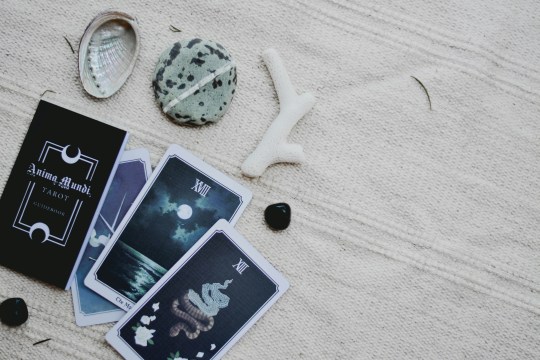
Photo by Content Pixie on Unsplash
⋆˖⁺‧₊☽🔮☾₊‧⁺˖⋆
If you have started to do your witchcraft research at all, you absolutely must have heard about sigils. They are one of the most popular concepts in witchcraft simply because they are so simple and require so little tools and effort.But, what is a sigil, how to create one and how do they work? That's what we are going to learn about in this post.
First of all, a very simple explanation of the concept of a sigil: it is a symbol that holds power, as simple as that. In old time christianity they might have been used to represent the name of an angel or a demon, in witchcraft they are used to symbolize the desires of the user, and in modern pop culture, some say that those symbols that bring up a strong connection to a concept, an image or idea can be considered memetic sigils (see brand logos).
Sigil comes from latin, meaning "seal". We aren't sure when they were first used, as they were a pillar of the rites and rituals for many cultures (runes for the vikings, symbols for celts…) but they became popular during the medieval era, where Christians would use them to represent angels and demons in summons. Back in the day, a sigil was considered a representation of the "true name" of such an entity, and knowing and using it was believed to grant you power over it. Sigils were also used in alchemy to symbolize certain components.
But most importantly, in our current age, sigils are popular in chaos magic as they are simple ways to tap into the energy of the universe to help you bring forth an outcome, or to put an idea into your subconscious. For our subconscious, complex phrases or concepts might be difficult to process so a sigil distills the very essence of that though and puts it into a form that is much simpler to interpret and remember.
To create a sigil you only need two things: a statement and intention. You can create one in three steps: drawing it (creating its shape), charging it (putting your intent and energy into it) and casting it (releasing it into the universe). Usually, creating a sigil requires nothing more than your imagination.
There are numerous types of sigils, all with different intents and purposes: sigils for names, intention, correspondence, linking… and just as many ways to create different sigils. However, to keep this post short, I will explain one of the simplest ways to create a sigil, charge and cast it.
First of all, you will need pen and paper. You need to, first, concentrate in your intention: make it as clear as possible or else it might not work. What do you want to manifest in your life, what do you want to bring forth, what idea do you want to send out to the universe? Keep it simple, easy to condense in a short phrase, or else the power of it might get diluted.
Then, write that phrase down. Take off all the of the vowels and all the repeating letters. For example, if you start with the phrase "PROTECTION AND BANISHMENT" you should end with the letters "PRCDBSHM". Now, arrange those letters into an image, or break them down into their bare components to do so (for example, some practitioners break up the H into two long sticks and a short one, the B into two semicircles… you get the idea).
Arrange an image that includes all the letters (or components) into it. Then, use your energy to concentrate on it: this naturally happens as you draw the sigil, but focusing your intention by visualizing the outcome, how your life will look like once it manifests, what results it will bring you… is very important too. By doing this, you are infusing the sigil with your power and intention, which makes it a powerful tool for manifesting desires and comunicates to the universe (and your subconscious) what you want.
After this, there are many ways to "cast" the sigil. Some people like to destroy it to "send it out to the universe": burning it, destroying it, wetting it… might help. Other people prefer using it in rituals and spells: carving it into a candle so it melts, or into a soap so it gets degraded over time. Others prefer to meditate into it, and to keep it around to see as often as possible: every time they see the symbol they cast it into the universe, and it becomes stronger in their subconscious. How you choose to cast it depends on you, on the intent of the sigil and what is available to you.
By the way, it is entirely possible to get or buy pre-made sigils, but you will need an extra of intention and charging for them to become as powerful as the ones you create yourself!
If anybody is interested, I will make a post expanding on some of the details in this one (let's say different types of sigils, different types of sigil creation…); or to create a post detailing in pictures how I create sigils. I wanted to keep this post short so I didn't give too many information (I think it is too long already).
I hope you have enjoyed this post. If you would like me to continue making posts like this please support me so I can continue making them: you can support me by donating here https://ko-fi.com/bunnymatchamochi or by visiting my Etsy store here: https://www.etsy.com/shop/LovenestAtelier?ref=profile_header Reblogs and likes also help ! Thank you so much for reading me !
1 note
·
View note
Text
Pastel Self-Love Spell

I’ve always said my aesthetic is pastel-punch-me-in-the-face, more commonly known as pastel goth. Sometimes, no matter how cute I dress up, I don’t love myself the way I should. But this spell always helps!
You will need:
A picture of you (One that you can lay flat so it can be on your phone if you want)
Something that makes you feel cute (It can be a piece of jewellery, make-up, clothing etc, etc.)
A rose quartz
Take your cute item and place it down in front of you, take the picture of you and place that in-front/on the item.
With the rose quartz, draw and visualise a heart around your picture.
You can say something here if you want:
“Of soft pink and pastel tones,
I’ll feel cute right to my bones.”
And there you go, for all my pastel peeps out there!
362 notes
·
View notes
Text
🐇white rabbits 🐇 white rabbits 🐇 white rabbits
Happy New year!!
0 notes
Text
Wheel of the Year: Yule
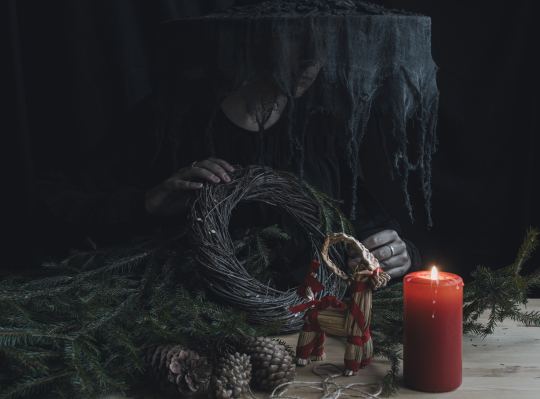
Photo by Ksenia Yakovleva on Unsplash
☽🔮☾🕯🃏🌕🕸✨🍃🍄🧿🌙✩ 🪄📚
Yuletide, Yule, Christmas… one of the biggest festivals in the wheel of the year and definitely one of the most popular ones, as it got adapted into Christianity and popularized as the "day of the birth of Christ". It is now known, observed and celebrated all over the world, be the country Christian or not. Even if Christmas is celebrated the 25th of December, Yule os more commonly celebrated between the 21st and the 23rd December on the North Hemisphere and between the 21st and the 23rd of June in the Southern Hemiphere.
Yule comes right after Samhain and before Imbolc. While pagan in origin, Christianity took from it, adapted it and turned into the majour festival of this religion.This is also one of the easiest to celebrate big time without needing to come out of the broom closet: a lot of the imagery of Christmas actually mirrors that from Yule, in fact.
Yule is the celebration of the winter solstice. Yule celebrates midwinter, and the longest night of the year. What this signifies is that the reign of darkness is over, the tipping point has been passed, and the reign of light is coming back. From now on, days are becoming warmer and warmer, sunnier and sunnier and life will start to come back to Earth, as winter winds down.
We don't know exactly where the origin of the word "yule" comes from, but it is suspected it might come from Old Norse, the word “jól", which meant a celebratory feast. The festival also has ties to Germanic and Scandinavian gods such as Odin, and it also played a part on their folklore.
Yule is a time for rejoicing. It mainly celebrates letting go of the old, accounting for the past year, cleaning house and making room for the new, shiny coming things. It's a time for rebirth, new beginnings and hope. It is also a time for reflection and introspection, to make sure not to repeat the same mistakes of the past year, and to try to steer ourselves in the good direction. It is also a time to chase away the darkness through joy and merriment: ignoring that the harvests have ended and our reserves are almost empty, let's celebrate and make merry for the good times are coming soon!
It doesn't matter where you live: Christmas, and therefore Yule, has become so popularized and commercialized that you probably can celebrate it inside your home and outside the house for the entire month of December. In most countries of the world illuminations, jingles, people dressed up as something or other and all sorts of shiny decorations will help you get in the holiday spirit. This is also one of the strong suits of Yule: you can still celebrate as much as you want, deck the halls and get into the holiday spirit… while still being extremely subtle about the fact that you practice witchcraft !
If you'd like to celebrate Yule, here you have a short list of options available to you. Some might be more adecuate to solitary practice, others might be best if you are part of a coven.Some allow you to get all materialistic about it, while others will help you keep in touch with the more traditional, raw side of the festival. Whichever you choose, make sure to enjoy yourself and look forward to the hope and hapiness this event brings us !
-Candles: Ever wondered why candles feature so prominently in Christmas decor ? Well, it's part of an old tradition where candles and fires were lit for Yule, both to light up the longest, darkest night of the year and to honour the Sun and call it home. Both candles and fire are incredibly popular motifs for Yule and many traditions include them, so if you can, light some: battery candles will do as well !
-Decorate: It's pretty evident that decorating is also a big theme in Yule. Christmas has become extremely commercial and big, lavish, expensive decorations have become the go-to; but just like with all the other festivals you don't need to break the bank to bring that holiday spirit home. Buying commercial decorations is not the only way to deck the halls: crafting your own, or collecting seasonal items such as pinecones, holly or mistletoe from nature are all fantastic options. Just make sure you are not damaging any plants or taking any protected species (holly is endangered in many countries) and you are golden !
-Crafting: Yule celebrates the longest night of the year, which means up until then the hours of night, of dark and of cold have been too long to go outside. This makes Yule a great festival to sit by the bonfire (or by candlelight) crafting decorations. Sew, crochet, felt, draw or create in any way that pleases you both to decorate your house and to offer gifts to your loved ones. I would recommend creating an evergreen wreath: they are so simple to make and so elegant !
-Bake: Like I mentioned just before, the days before Yule are too dark and cold to be out of the house much. The harvest season has also ended, so fresh ingredients are lacking: baking with dry ingredients such as flour served a double purpose back in the day (cleaning up the pantry from non-perishables that would sustain you through winter and starting the oven that would light up the entire house). Cookies and biscuits are traditional, but so are breads, pies, cakes, pizza… highly caloric, sugary food is favoured as well: you need to put on some weight to be able to deal with the freezing winter temperatures!
-Feast: "Feast", "festival"… close enough. You can't have a festival without feasting, and what are you going to do, not eat all those delicious cookies you just baked ? To really honour the season and bring some good luck and prosperity your way, make sure to share that feast with your loved ones or to do some charity !
-Share: While Christianity and Christmas might have popularized the "charity" aspect of Yule, it was always important to share during this season: those neighbours that weren't as fortunate in the past year might be running low on supplies and ingredients. Therefore, sharing is extremely important during Yule if you have extra, no matter what shape it takes: share your abundance by inviting your loved ones to a feast, give lovely gifts to those around you, share your time and joy by volunteering at a soup kitchen…
-Divination: Yule is close enough to the end of the year that you might be wondering what it has in store for you. Using a pendulum, scrying, tarot, tasseomancy… any way is good to discover what the future might hold and to look forward to it.
-Deep cleansing: Yule is a moment of saying goodbye to the past and honouring rebirth and new beginnings, so it is a particularly auspicious moment to make inventory, clean house and make room for the new and coming. This might be more metaphorical (looking back in the past year and letting go of what didn't serve you) or more physical, like really cleaning your house. Cleanse yourself and your house and don't forget to protect yourself to keep the wacky energies at bay.
-Shadow work: Yule is a particularly good moment for self reflection, for looking into the past and for being honest with ourselves. Shadow work will help you come to terms with the most painful parts of your past and of yourself, make a clean break with them and, if you can't let them go, make strides to integrate them into yourself and to start the healing process.
-Honouring: Yule marks the day where the Sun, the brightness and the warmth start to return to us. It would be a good moment to honour the Sun, honour your deities, honour yourself and everything and all that have allowed you to come to this place. Meditation, self reflection, gratefulness, offerings to your deities… all things that help you feel connected to yourself and the world, and everything that makes you feel grateful and hopeful for the future, works here.
-Decorate your altar: We can't have a festival without decorating your altar ! Add colours, motifs and themes that remind you of the season to your altar. It's also a good option to add offerings to any deities you might work with.
Colours associated with Yule: White, black, red, green, silver, gold
Crystals associated with Yule: Black obsidian, red jasper, carnelian, calcite, sunstone
Food associated with Yule: Apples, spices, wine and alcoholic beverages, baked items, meat, berries, sweets
I hope you have enjoyed this post. If you would like me to continue making posts like this please support me so I can continue making them: you can support me by donating here https://ko-fi.com/bunnymatchamochi or by visiting my Etsy store here: https://www.etsy.com/shop/LovenestAtelier?ref=profile_header Reblogs and likes also help ! Thank you so much for reading me !
7 notes
·
View notes
Text
🐇 white rabbits 🐇 white rabbits 🐇 white rabbits
#witch#witchcraft#witchcraft 101#wicca#1st of the month#baby witch#emoji spell#witchling#good luck spell
1 note
·
View note
Text
Pshh, hey. If you are in a budget or if you have to hide your practice, I have some witchy tips for you.
• You don’t need to have an altar. But if you want to, creating an altar on a wooden box is great; you can collect stuff to put in there and you can hide it under your bed.
• You don’t need crystals. Common rocks can be energised to act with a certain intention and they work just as well. You can also associate the place you got the stone/rock from with an intention, such as: a rock from a river or sea can be used for cleansing, purifying, taking energies away from you. A stone found at the property of a hospital can be used for health spells. These are vague examples, so I might make a list later on of all kinds of things you can do with mineral founding.
• Energised water is a great offering to most entities. Water holds memory and it’s easy to energise it with a certain intention if you concentrate.
• You don’t actually need candles. For many deities, an object that remembers you of them works as a taglock, an identification of the deity you’re worshipping. Besides, many spells do not need candles to work, such as: ritual baths, petitions, etc.
Have fun, and remember that your practice isn’t meant to look the same as other practitioners’. We are supposed to do things our own way, as long as it doesn’t harm anyone or anything.
898 notes
·
View notes
Text
🐇white rabbits🐇white rabbits🐇white rabbits
28 notes
·
View notes
Text
Wheel of the year: Samhain

Photo by Elena Mozhvilo on Unsplash
☽🔮☾🕯🃏🌕🕸✨🍃🍄🧿🌙✩ 🪄📚
Samhain is the third of the harvest festivals observed in witchcraft, and perhaps the most popular one.Samhain is usually celebrated between the 31st of October to the 1st of November in the northern hemisphere and from the 31st of April to the 1st of May in the southern one.
Samhain comes right after Mabon and before Yule. It is also one of the most widely observed festivals both in witchcraft and in those folklores that drew from our traditions, as it was adapted by Christianity into "Halloween" or "All Hallow's Eve", commercialized, internationalized and spread as part of "traditional American culture" all over the globe.
However, this festival has nothing American in origin, but like most other wiccan or witch festivals it originated in Celtic folklore and culture. This festival not only celebrate the third and last harvest of the year; but it is also considered the other "midpoint" of the year (with Beltane being it's opposite), a "turning point", and the day where the veil thins, allowing from visitors from the Other side to come and hang out with us for a night.
As a celtic festival, Samhain is still widely observed in countries of Celtic tradition (Ireland, Scotland, Wales, France, Spain…) but it has also been adapted and popularized by American culture as Halloween, a "time for fright" but also for reflection and for remembering the ones that are not here with us any longer.
As a harvest festival, Samhain honours abundance, prosperity and bountifulness. Back in the day, after the last of the harvest was collected and the fields were cleared the cattle wa brought to the pastures for its last grazing, and then slaughtered to spare it from the harshness of winter. Ritualistic fires were also lighted, just like in Beltane, for protection and cleansing.
As a threshold festival where our world and that of the dead and of the fairies meet, rituals of protection, of appeasement, of welcoming and departing were held: we welcomed visitors amongst us for one night, we honoured and thanked them, we reflected on how much of our abundance is owed to them and them we gave them a proper depart to ensure they didn't linger with us for too long.
No matter where you live, you might look forward to those traditions American culture has popularized: trick or treating, dressing up and watching spooky movies. In some other countries, particularly those of Celtic tradition, you might be able to participate in many more rituals. However, no matter in which country you live, if you are a solitary practitioner or in a coven and no matter how subtle you want to be about your practice there are many options available to you to honour this festival.
-Dressing up: the tradition of dressing up and trick or treating are both very intimately tied to Celtic folklore. Back in the day, it was believed that the dead and fairies would come visit us during Samhain, as it was when the veil between worlds was thinnest. Therefore, people would dress up (often in spooky costumes) to mix with them. Then, treats would be offered to appease and honour them. Honour this tradition by dressing up (preferably in a spooky costume) and go trick or treating, or stay at home and offer treats to those that come visit you!
-Trick or treating: as explained before, this goes hand in hand with dressing up. Back in the day, treats would be offered to the dead and to the fairies to appease them, lest they haunt us if we don't honour them properly. Going trick or treating is a fantatic way to oberve Samhain, specially if you are dressed in a super spooky costume!
-Decorate: This is one of the two times of the year where the departed come back to visit, so you wouldn't want them to find the place a mess, isn't it? Be it your house or the town square go all out with spooky and seasonal decorations! Bats, pumpkins, acorns, skeletons… deck the halls and make it stunning, but don't forget to cleanse and ward the day after, lest any negative presence lingers and is not sent off properly.
-Feast: Just with like any other witchcraft festival, you need to feast to bring that seasonal spirit home. Samhain is, after all, another harvest festival so honour the last of the abundance by eating well and being grateful for all the prosperity and bountifulness the season has bestowed upon you.
-Dumb supper: Can you notice a theme with the ways to honour Samhain? Eating is a big part of this festival, but so is reflecting on the past and honouring our ancestors. To celebrate a dumb supper, prepare plenty of food (if possible something that your ancestors enjoyed!. Next, prepare extra seats (that will be left empty, for those that will come from the other side). Through your intention, invite the departed to join you and explain that this meal is to honour them. After that, wait a little, so they can "serve themelves" and partake of the offering. Lastly, partake in the meal yourself… in complete silence the entire time. You might finish this ritual by making extra offerings (burying biodegradable food in the floor, pouring drinks in the floor…), by burning any message that you want to send to them, or by visiting their graves and leaving an offering such as flowers.
-Visiting graves: A traditional part of Samhain and a very common custom in Christian countries, visiting graves to honour the departed is usually done on the 1st November. Visiting the grave also requires a moment of gratefulness, of reflection and of communion with the fact that death is a part of life. In a lot of Christian countries, we also leave offerings to honour the dead with flowers and candles being the most popular ones.
-Candles and fires: During Samhain, fires are of course lit for ritualistic purposes and for cleansing, but they also are lit to honour the departure or the light, of longer days… and of those that came to visit us. If you can't lit a fire, candles will do just fine.
-Watch the sunrise/sunset: Take in the fact that, starting from now, the hours of light will be less and less and the hours of darkness will only increase. Take that time to reflect about the past year, to be grateful for both light and darkness and to truly be in communion with nature and the natural cycles of life: we can't have light without darkness and we can't have darkness without light.
-Decorate your altar: A staple in every single festival, decorating your altar is a lovely option to celebrate this festival and to honour any deities you work with (if you so wish). Deck your altar in seasonal colours, relevant stones, offerings or anything that pleases you and makes you happy.
Colours associated with Samhain: Dark tones, black, white, brown, yellow, orange, gold
Crystals associated with Samhain: Quartz (particularly smoky quartz), black tourmaline, amethyst, obsidian, citrine, bloodstone
Food associated with Samhain: Apples, pumpkin, nuts, cheese, sweets, meat, honey,chocolate
I hope you have enjoyed this post. If you would like me to continue making posts like this please support me so I can continue making them: you can support me by donating here https://ko-fi.com/bunnymatchamochi or by visiting my Etsy store here: https://www.etsy.com/shop/LovenestAtelier?ref=profile_header Reblogs and likes also help ! Thank you so much for reading me !
2 notes
·
View notes
Text
Wheel of the year: Samhain

Photo by Elena Mozhvilo on Unsplash
☽🔮☾🕯🃏🌕🕸✨🍃🍄🧿🌙✩ 🪄📚
Samhain is the third of the harvest festivals observed in witchcraft, and perhaps the most popular one.Samhain is usually celebrated between the 31st of October to the 1st of November in the northern hemisphere and from the 31st of April to the 1st of May in the southern one.
Samhain comes right after Mabon and before Yule. It is also one of the most widely observed festivals both in witchcraft and in those folklores that drew from our traditions, as it was adapted by Christianity into "Halloween" or "All Hallow's Eve", commercialized, internationalized and spread as part of "traditional American culture" all over the globe.
However, this festival has nothing American in origin, but like most other wiccan or witch festivals it originated in Celtic folklore and culture. This festival not only celebrate the third and last harvest of the year; but it is also considered the other "midpoint" of the year (with Beltane being it's opposite), a "turning point", and the day where the veil thins, allowing from visitors from the Other side to come and hang out with us for a night.
As a celtic festival, Samhain is still widely observed in countries of Celtic tradition (Ireland, Scotland, Wales, France, Spain…) but it has also been adapted and popularized by American culture as Halloween, a "time for fright" but also for reflection and for remembering the ones that are not here with us any longer.
As a harvest festival, Samhain honours abundance, prosperity and bountifulness. Back in the day, after the last of the harvest was collected and the fields were cleared the cattle wa brought to the pastures for its last grazing, and then slaughtered to spare it from the harshness of winter. Ritualistic fires were also lighted, just like in Beltane, for protection and cleansing.
As a threshold festival where our world and that of the dead and of the fairies meet, rituals of protection, of appeasement, of welcoming and departing were held: we welcomed visitors amongst us for one night, we honoured and thanked them, we reflected on how much of our abundance is owed to them and them we gave them a proper depart to ensure they didn't linger with us for too long.
No matter where you live, you might look forward to those traditions American culture has popularized: trick or treating, dressing up and watching spooky movies. In some other countries, particularly those of Celtic tradition, you might be able to participate in many more rituals. However, no matter in which country you live, if you are a solitary practitioner or in a coven and no matter how subtle you want to be about your practice there are many options available to you to honour this festival.
-Dressing up: the tradition of dressing up and trick or treating are both very intimately tied to Celtic folklore. Back in the day, it was believed that the dead and fairies would come visit us during Samhain, as it was when the veil between worlds was thinnest. Therefore, people would dress up (often in spooky costumes) to mix with them. Then, treats would be offered to appease and honour them. Honour this tradition by dressing up (preferably in a spooky costume) and go trick or treating, or stay at home and offer treats to those that come visit you!
-Trick or treating: as explained before, this goes hand in hand with dressing up. Back in the day, treats would be offered to the dead and to the fairies to appease them, lest they haunt us if we don't honour them properly. Going trick or treating is a fantatic way to oberve Samhain, specially if you are dressed in a super spooky costume!
-Decorate: This is one of the two times of the year where the departed come back to visit, so you wouldn't want them to find the place a mess, isn't it? Be it your house or the town square go all out with spooky and seasonal decorations! Bats, pumpkins, acorns, skeletons… deck the halls and make it stunning, but don't forget to cleanse and ward the day after, lest any negative presence lingers and is not sent off properly.
-Feast: Just with like any other witchcraft festival, you need to feast to bring that seasonal spirit home. Samhain is, after all, another harvest festival so honour the last of the abundance by eating well and being grateful for all the prosperity and bountifulness the season has bestowed upon you.
-Dumb supper: Can you notice a theme with the ways to honour Samhain? Eating is a big part of this festival, but so is reflecting on the past and honouring our ancestors. To celebrate a dumb supper, prepare plenty of food (if possible something that your ancestors enjoyed!. Next, prepare extra seats (that will be left empty, for those that will come from the other side). Through your intention, invite the departed to join you and explain that this meal is to honour them. After that, wait a little, so they can "serve themelves" and partake of the offering. Lastly, partake in the meal yourself… in complete silence the entire time. You might finish this ritual by making extra offerings (burying biodegradable food in the floor, pouring drinks in the floor…), by burning any message that you want to send to them, or by visiting their graves and leaving an offering such as flowers.
-Visiting graves: A traditional part of Samhain and a very common custom in Christian countries, visiting graves to honour the departed is usually done on the 1st November. Visiting the grave also requires a moment of gratefulness, of reflection and of communion with the fact that death is a part of life. In a lot of Christian countries, we also leave offerings to honour the dead with flowers and candles being the most popular ones.
-Candles and fires: During Samhain, fires are of course lit for ritualistic purposes and for cleansing, but they also are lit to honour the departure or the light, of longer days… and of those that came to visit us. If you can't lit a fire, candles will do just fine.
-Watch the sunrise/sunset: Take in the fact that, starting from now, the hours of light will be less and less and the hours of darkness will only increase. Take that time to reflect about the past year, to be grateful for both light and darkness and to truly be in communion with nature and the natural cycles of life: we can't have light without darkness and we can't have darkness without light.
-Decorate your altar: A staple in every single festival, decorating your altar is a lovely option to celebrate this festival and to honour any deities you work with (if you so wish). Deck your altar in seasonal colours, relevant stones, offerings or anything that pleases you and makes you happy.
Colours associated with Samhain: Dark tones, black, white, brown, yellow, orange, gold
Crystals associated with Samhain: Quartz (particularly smoky quartz), black tourmaline, amethyst, obsidian, citrine, bloodstone
Food associated with Samhain: Apples, pumpkin, nuts, cheese, sweets, meat, honey,chocolate
I hope you have enjoyed this post. If you would like me to continue making posts like this please support me so I can continue making them: you can support me by donating here https://ko-fi.com/bunnymatchamochi or by visiting my Etsy store here: https://www.etsy.com/shop/LovenestAtelier?ref=profile_header Reblogs and likes also help ! Thank you so much for reading me !
2 notes
·
View notes